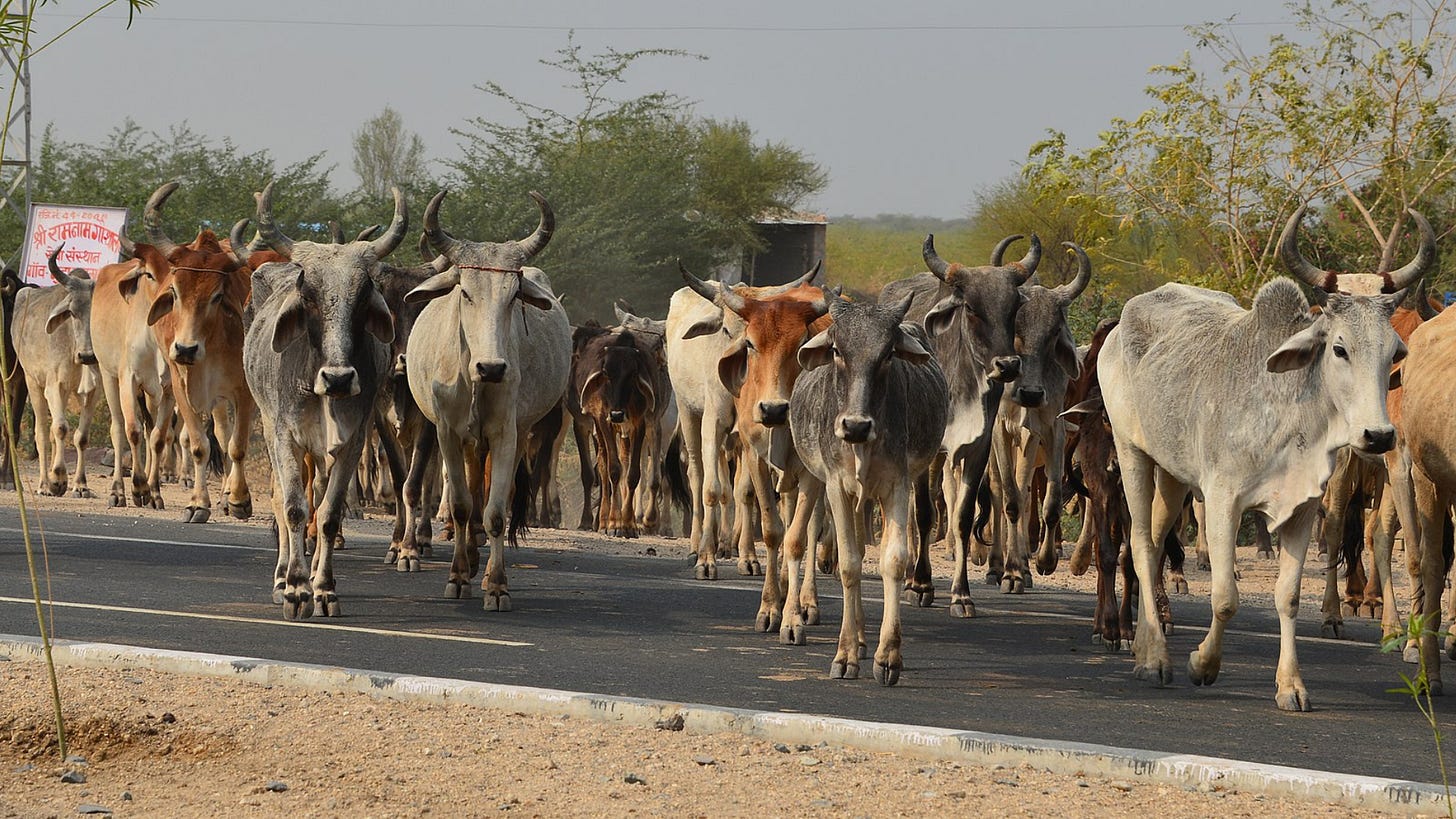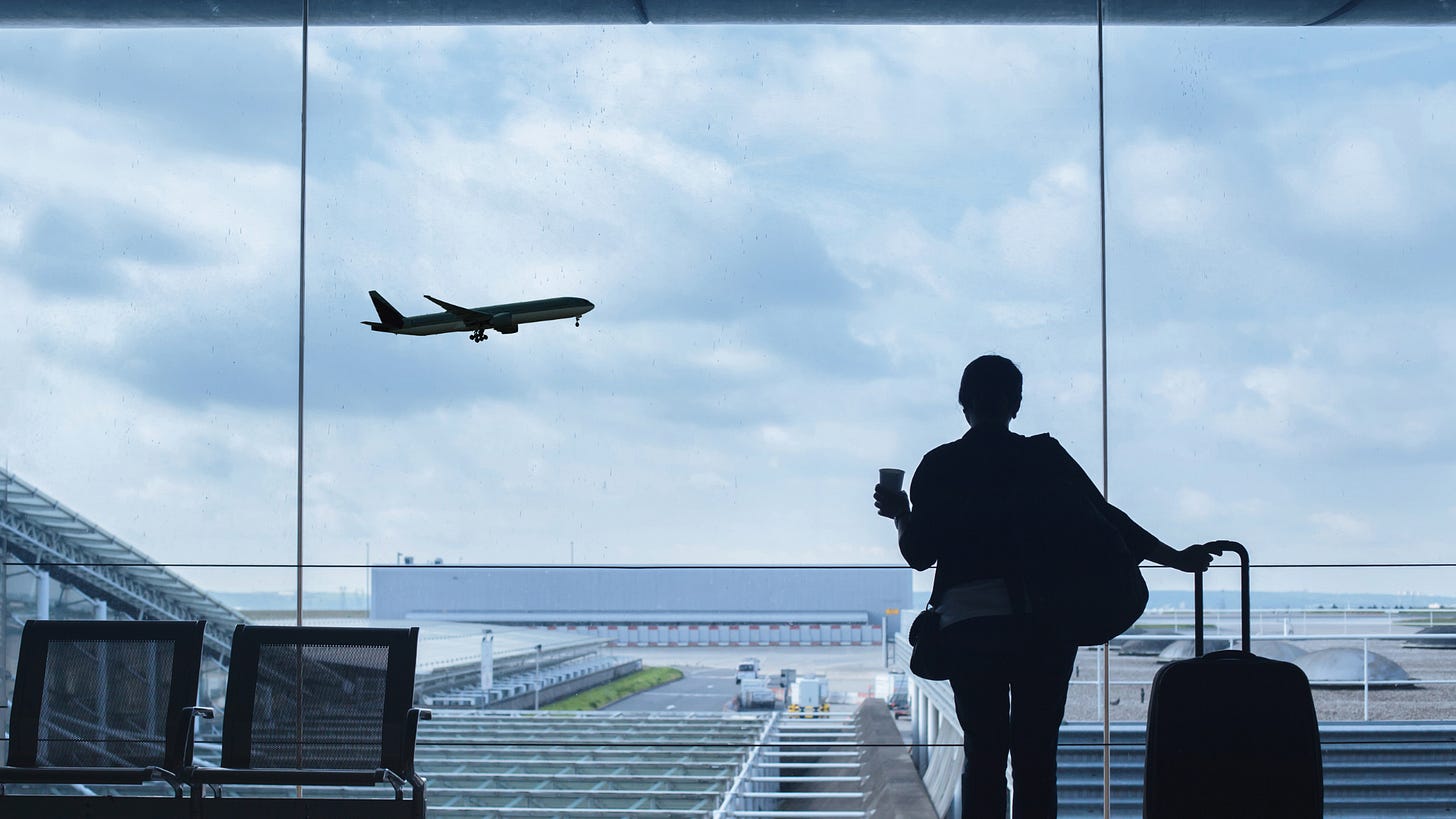Insuring cows and coral for climate risk
India's cattle insurance, global blood supply at risk, and traveling with climate in mind
Around 86 percent of India's farmers are smallholders who work two hectares of land or less. These farmers produce much of India's food; but they already deal with a host of challenges, from expensive supplies to middlemen who take a cut of their earnings. As climate changes, shifting rainfall patterns and increasing heat stress, it’s cutting more and more into their ability to turn a profit.
Agritech company DeHaat is working to change this. They already host an agribusiness marketplace platform that directly connects 1.5 million smallholder farmers with suppliers, buyers, and crop advisory services. Last year, they started offering cattle insurance, which compensates farmers if their cows produce less milk or even perish due to heat stress.
One farmer from a village near Jaipur, in Rajasthan, who bought an insurance policy from DeHaat said it has made him feel much more secure. “For the first time, I have taken out insurance this year, which promises fixed compensation if the milk production of my livestock dips due to high temperatures,” Mali Ram Sharma told the Indian publication Down to Earth. “A cow in my village usually produces 20 litres of milk a day. In the current heat, the yield has dropped to just 16 litres."
As climate risks increase, one way of building resilience, temporarily, is to develop creative ways to offer insurance on everything from coral reef recovery to wildfire restoration. While these offer innovative approaches to financing resilience today, though, the worse climate impacts become, the less viable these mechanisms will become. The bottom line is clear: to successfully adapt to climate change, we have to cut our heat-trapping gas emissions as much as possible, as quickly as possible.
I've written before about how climate change has all sorts of unexpected consequences for our health, impacting everything from fertility rates to skin aging. But here’s one you might not have seen coming: it’s also putting the global blood supply chain at risk.
More frequent extreme weather events, shifting ranges of diseases, and rising temperatures are making it harder to collect, test, store, and transport blood safely. Even more concerning, extreme weather disasters can increase the demand for blood at the same time that it makes it harder to collect it.
“Any major disruptions to the availability and safety of the blood supply puts lives at risk,” says Elvina Viennet, an infectious disease researcher at Australia's University of the Sunshine Coast and one of the study’s lead authors.
To help prevent shortages, the researchers recommend several practical solutions: making blood collection systems more adaptable to changing weather, using drones to deliver blood when roads are blocked, ensuring transport vehicles can be effectively cooled as temperatures rise, and improving how blood is distributed to hospitals and clinics during emergencies.
Northern Hemisphere summer is travel season for many of us—whether we’re headed to a favorite beach, visiting family, or planning a trip to a national park. But as travel rises, so do the carbon emissions linked to planes, hotels, and lodging. In fact, transportation makes up nearly a quarter of global heat-trapping gas emissions—and tourism alone accounts for about 8 percent of that.
As someone who lives half a continent away from my family, I know firsthand how avoiding personal travel isn’t always possible. Plus, visiting new places gives us an appreciation for this incredible planet, and increases our desire to care for it. So how can we travel in a more sustainable way?
I have a few suggestions:
Fly less. This is the number one way to cut our travel emissions. As my colleague Kim Nicholas says, “Sort your flights into those you need to take (such as to see your loved ones) and those you don’t need to take, and prioritize the former. Ask yourself if you can satisfy your need for a different routine or culture without getting on a plane.”
Go closer and stay longer. You don’t have to travel far to enjoy a summer escape. Consider destinations you can reach by train, bus, or car. When we first moved to West Texas, I didn’t think there was anywhere interesting nearby to visit – and I was so wrong! Once I took the time to look, I realized there were many incredible places to visit, well within a day’s drive or less: from natural springs like Balmorhea to the dark skies and open vistas of Big Bend National Park to the pueblos and white sands of New Mexico.
Fly smart. If flying is unavoidable, prioritize non-stop flights, since takeoffs and landings burn the most fuel. After you search for a flight on Google flights, you’ll see an “emissions” tab at the top that helps you choose the lowest-carbon flights.
Choose stays that give back. From coastal ecolodges to mountain homestays, look for accommodations that are eco-certified or locally run. Spending your money at family-owned restaurants, local tour companies, and local artisans helps communities thrive.
And most importantly, make these travel habits contagious by talking about them! Share what you’re doing and why with your friends, family, or other travelers, and tell them how much you enjoyed it. When we normalize thoughtful choices and show what’s possible, we create ripple effects that inspire others, which leads to systemic change.
Sun June 22 at 6pm MT - "Saving Us: Book Discussion" with Calgary Climate Hub, The Wisdom Centre and the Calgary Interfaith Council, in person at 800 3 St SE Calgary, Alberta - $15









I always appreciate your clear-eyed and hopeful take in this complex and frightening moment in human history. Travel is something I grapple with because I know firsthand how seeing other places and being introduced to other cultures can fundamentally change a person for the better. And yet the emissions from travel put that at risk. Sammy Roth, in his LA Times climate column Boiling Point, highlighted a company called Tradewater that does carbon offset through capping of orphan gas and oil wells and permanent destruction of CFCs. Carbon offsets have a questionable reputation for a lot of good reasons, but this is a tool I’m exploring as I try to be more selective about my travel.
I've not flown for over 15 years! We generally holiday in Scotland and travel to our destination by public transport (though we sometimes hire a car when we get there, if we're going somewhere very rural).